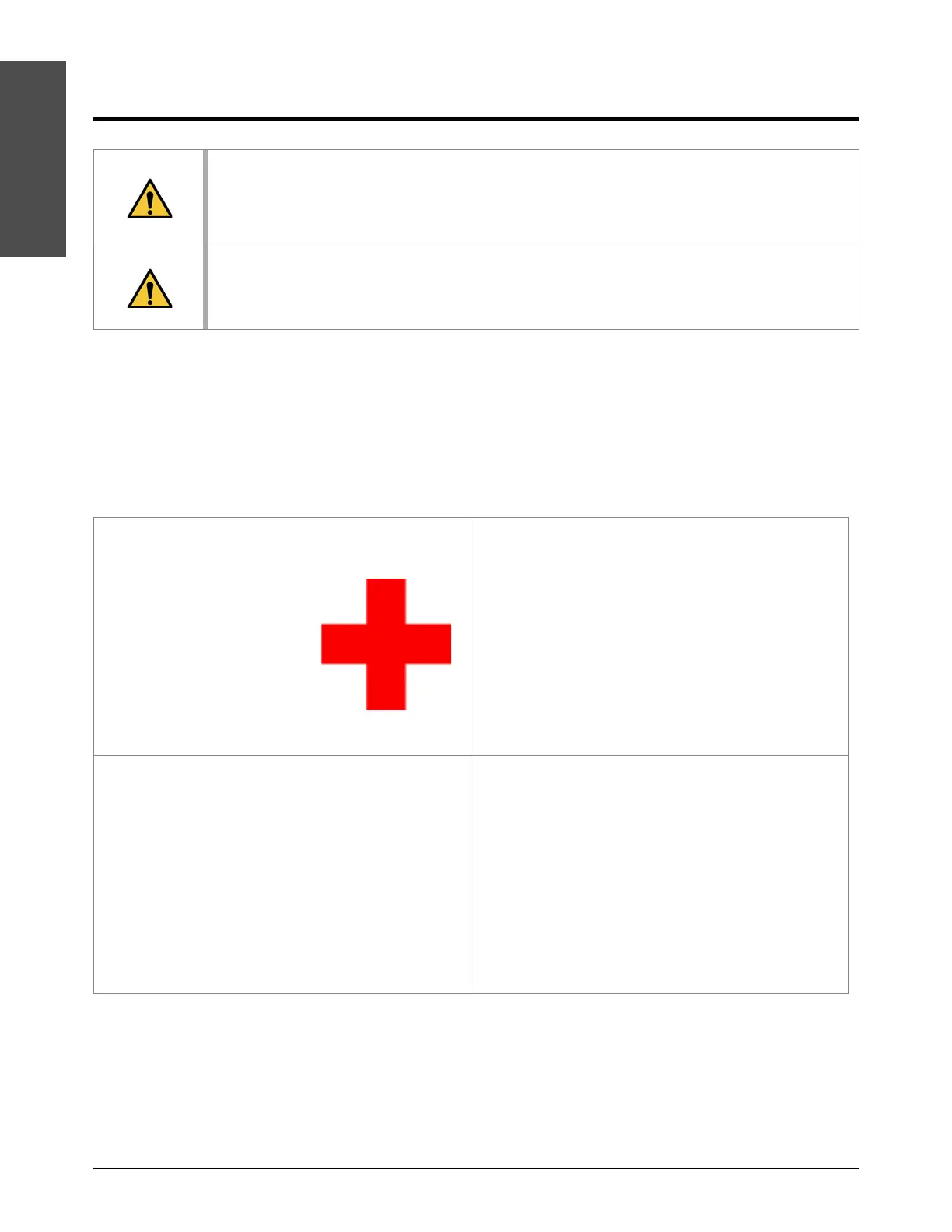Safety
SC-24 810770 Operator Manual Echion
Emergency medical information and treatment
High-pressure equipment puts the operator and other personnel at risk of contact with
high-pressure water. Possible injuries include eye damage, lacerations, infections, and amputations.
Waterjet operators should have a waterproof emergency medical tag or card that describes the
recommended treatment for high-pressure water injuries. Show the tag or card to emergency
responders and medical professionals.
This wallet-size card can be copied, laminated, and folded.
WARNING
A waterjet is a cutting tool.
Keep away from high-pressure streams and leaks. Pressurized fluid can cause injuries.
Delayed treatment can cause injuries or death.
WARNING
Do not put ice or heat on a waterjet injury.
If possible, use a support to keep injured body parts above heart level.
MEDICAL
INFORMATION
A high-pressure injection
injury is a surgical
emergency.
Get medical treatment
immediately for all
high-pressure waterjet
injuries.
The person with this card has been exposed to a waterjet
of up to4,140bar(60,000psi) and a velocity
of609m/s(2,000feet/second). Abrasive waterjets can
eject water and abrasive materials that can be injected into
body tissues, leading to a dangerous infection.
Skin can appear to be not damaged or show a small
pinhole-sized puncture wound.
The injured area can become swollen, painful, and pale
over the next4to6hours.
Tissue becomes ischemic and necrotic within12hours.
Do not use digital or local nerve blocks.
Give analgesics by mouth or injection.
Consult a surgical specialist immediately for
decompression, removal of foreign materials, and
debridement.
Give broad-spectrum, intravenous antibiotics for
Gram-negative and Gram-positive organisms.
X-ray is the preferred imaging method.
Acute compartment syndrome is possible.
Leave the wound open.
Do not use solvents other than isotonic sodium chloride
solution for irrigating the wound.
